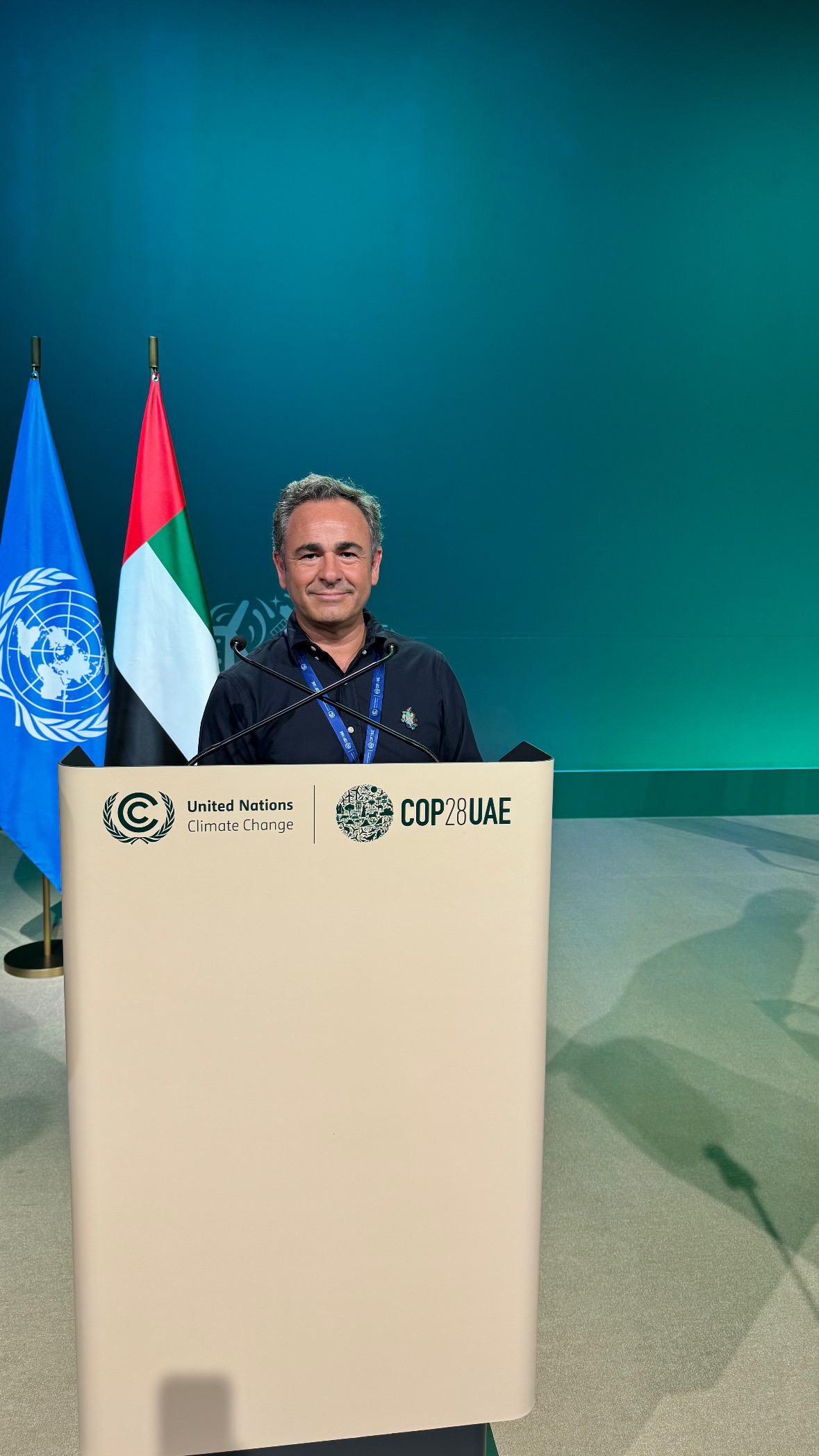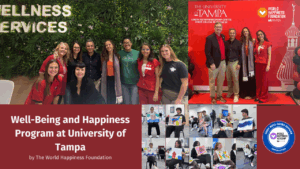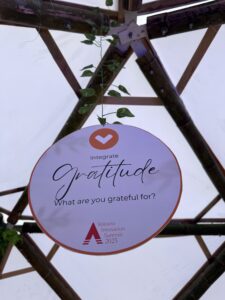
The Dark Side of Belonging: How Soul Groups and Survival Instincts Shape Genocide
Dedication To all victims and survivors of terror, genocide, and

Climate action (United Nations Sustainable Development Goal 13) stands at the heart of both sustainable development and human happiness. A stable climate and healthy planet are not luxuries; they are prerequisites for the well-being of all life. In recent years, the world has witnessed unprecedented warning signs: 2023 was the hottest year on record, with global temperatures temporarily exceeding the 1.5°C threshold set by the Paris Agreementsdgs.un.org. Catastrophic floods, droughts, and storms have displaced more people than any year in the past decade, worsening food crises and economic instabilitysdgs.un.org. Yet amidst these challenges, there are seeds of hope. The global community is awakening to the urgency of the moment – from grassroots climate strikes to international agreements – and recognizing that bold, collaborative action can still secure a livable futuresdgs.un.org. The World Happiness Foundation (WHF) views SDG 13 as absolutely critical, because a balanced climate underpins all other aspects of well-being. In our paradigm of “Happytalism,” humanity thrives only when we honor Earth as a living system and ensure its vitality for generations to come. Protecting our planet is not a burden to be shouldered grudgingly; it is a joyous responsibility and an opportunity to co-create a future of abundance rather than one of scarcity and fear.
SDG 13 (“Climate Action”) is traditionally defined as “Take urgent action to combat climate change and its impacts.” The World Happiness Foundation embraces and expands this mandate by reframing SDG 13 as “Planetary Well-Being & Climate Balance,” emphasizing a positive, life-affirming vision of climate action. As Luis Gallardo – WHF’s founder and architect of the Happytalism paradigm – describes, we must honor Earth as a living system and take collaborative action to restore climate harmony. Rather than a desperate “fight” against climate change, we seek to mobilize a joyful global movement to regenerate ecosystems, transition to green energy (linked to SDG 7 on clean energy), and protect our collective home for future generations. This vision shifts the focus from merely cutting carbon and averting disaster to actively healing our planet and enhancing its capacity to support life. Planetary well-being means viewing the Earth itself as a stakeholder in development – a beloved partner, not an inexhaustible resource. It calls for an attitude of stewardship grounded in gratitude: humans working with nature to reforest barren lands, revive oceans, and restore balance to the climate that nurtures us. By adopting this abundance-minded approach, climate action transforms from a grim obligation into a unifying adventure for humanity – an inspiring journey to create a thriving, sustainable world together.
Crucially, this reframed vision is holistic and forward-looking. It recognizes that technological solutions (like renewable energy and carbon capture) must go hand-in-hand with an ethical and spiritual shift in how we relate to nature. We draw inspiration from indigenous philosophies and emerging legal movements that recognize the rights of nature – treating rivers, forests, and ecosystems as entities with their own right to flourish. A growing number of countries and communities (from Ecuador to New Zealand) have begun to grant legal personhood to rivers and forests, reflecting an ancient truth: when nature thrives, people thrive. “Climate Balance” thus encompasses not only stabilizing greenhouse gases, but also healing our relationship with Mother Earth. In practice, this means embracing regenerative practices (such as restoring wetlands, planting billions of trees, and farming in harmony with ecosystems) that actively enhance Earth’s well-being. It also means infusing joy and creativity into climate solutions – from community tree-planting festivals to youth-led innovation challenges – making the journey toward sustainability an inspiring collective endeavor. The WHF’s Planetary Well-Being approach to SDG 13 invites everyone to see climate action not as a war we must fight, but as a peace we must celebrate: peace with nature, and by extension, peace within ourselves.
Climate balance is deeply interconnected with every one of the other 16 Sustainable Development Goals – progress or failure on climate reverberates across all aspects of human well-being. The UN’s 2030 Agenda itself stresses “the complexity and interdependence” of these goals, and nowhere is this more evident than with SDG 13. Simply put, we cannot achieve sustainable happiness or eliminate human suffering if our planet is in peril. For example, No Poverty (SDG 1) and Zero Hunger (SDG 2) are directly undermined by climate change: extreme weather and shifting climate patterns devastate crops and infrastructure, threatening livelihoods and food security for millions. Without climate action, an estimated 100+ million people could be pushed into extreme poverty by 2030 due to crop failures, disasters, and disease. Conversely, investing in climate resilience – like climate-smart agriculture and disaster preparedness – can protect hard-won gains in poverty reduction. It is often the world’s poorest who suffer first and worst from droughts or floods, so climate justice is integral to social justice.
Good Health and Well-Being (SDG 3) is likewise intertwined with a stable climate. A healthy environment directly translates to healthier people. Climate change poses emerging health threats – from deadly heatwaves and wildfire smoke, to the spread of infectious diseases like malaria into new regions – all of which endanger well-being. The World Health Organization warns that climate change is expected to cause approximately 250,000 additional deaths per year between 2030 and 2050 from malnutrition, malaria, diarrhea, and heat stress. Furthermore, air pollution (much of it from the same fossil fuels driving climate change) already kills an estimated 7 million people every year, a staggering toll that urgent climate action could help reduce. In this sense, taking care of the planet is taking care of people: when we cut emissions and shift to clean energy, we also reap immediate benefits like cleaner air, safer water, and healthier communities. As the WHF emphasizes, protecting our planet goes hand in hand with protecting our people. Every ton of carbon kept out of the atmosphere, every forest protected, and every city made greener contributes to longer and happier lives for all.
Nearly every other SDG has similar linkages. Clean Water and Sanitation (SDG 6) depends on climate stability, since global warming disrupts rainfall patterns and water supplies; ensuring safe water for all will require safeguarding the climate that cycles our water. Affordable and Clean Energy (SDG 7) is both a solution to climate change and a development boon – renewable energy can bring power to billions while cutting emissions, illustrating the synergy between green energy and prosperity. Decent Work and Economic Growth (SDG 8) in a climate-challenged world calls for a green economy: industries in renewable energy, sustainable transport, and climate adaptation are already creating millions of jobs and will drive the future economy. Meanwhile, unchecked climate impacts could erode economic growth, deepen inequalities, and force mass migrations, destabilizing societies – undermining Peace, Justice and Strong Institutions (SDG 16). On the flip side, Climate Action is a foundation for peace: research shows that resource scarcity and climate disasters can fuel conflict, whereas cooperation on shared environmental challenges can build trust between communities and nations. In sum, climate action is the connective tissue of sustainable development. By restoring climate balance, we create the conditions for success in ending hunger, improving health, advancing education (imagine schools powered by solar energy and teaching climate literacy), achieving gender equality (as women and girls are often disproportionately affected by climate shocks), and beyond. The World Happiness Foundation thus advocates an integrated approach: solving the climate crisis is integral to every global goal, and in turn, progress in any goal – whether poverty, education, or equality – makes us more capable of addressing climate change. Our pursuit of happiness and well-being cannot be siloed; it must encompass the well-being of the planet that sustains us all.
Achieving SDG 13 will require more than just cutting emissions or negotiating international treaties – it calls for a profound mindset shift in how we approach climate action. For too long, the narrative around climate change has been dominated by scarcity, fear, and sacrifice. We hear that there’s “not enough time,” “not enough money,” or that saving the planet means giving things up – a zero-sum struggle of economy vs. environment. This scarcity mindset can breed paralysis, resistance, and gloom. Happytalism, by contrast, flips the script: it “replaces fear with trust” and envisions humanity’s transition to sustainability as a journey of abundance, innovation, and shared benefit. We believe the world already has – or can creatively generate – the knowledge, technology, and resources needed to solve the climate crisis and uplift human prosperity. Rather than focusing on what we must lose, we focus on what we can create together. An abundance mindset reveals that climate action is not a cost to endure, but an investment that pays dividends – in jobs, health, security, and joy.
In practical terms, this means highlighting the opportunities in the green transition. For example, renewable energy from the sun, wind, and waves is virtually limitless and increasingly cost-effective. Thanks to rapid innovation, the world added a record 510 gigawatts of new renewable power capacity in 2023, a 50% jump over the previous year. Solar and wind energy are now the cheapest source of electricity in many regions, proving that we can power our economies with clean abundance rather than polluting scarcity. This “green revolution” is already creating millions of new jobs and business opportunities: from solar technicians and wind turbine engineers to sustainable farmers and electric vehicle designers. Global investment is following suit – climate finance flows have surged to $1.3 trillion per year in 2021–2022 (up 63% from just a few years prior) to fund clean energy, sustainable transport and resilient infrastructuresdgs.un.org. These trends show that we are not fighting a losing battle; we are rapidly building a new world. Every dollar invested in climate solutions brings multiple dollars in benefits by reducing the damages from climate disasters and improving public health. For instance, studies find that every $1 spent on climate adaptation (like flood defenses) can save up to $4 in avoided lossessdgs.un.org – a clear win-win for people and the planet. In an abundance paradigm, such investments are common sense: why compete over dwindling fossil fuels when we can all share in the endless energy of the sun?
Moreover, an abundance mindset encourages collaboration over competition. Climate change does not recognize national borders; no country can hoard “good climate” for itself. Thus, the only way forward is together – pooling our knowledge, resources, and goodwill. We saw a glimmer of this during the COVID-19 pandemic, when unprecedented global cooperation led to vaccines in record time, saving millions of lives. Similarly, the fight against ozone depletion in the 1980s and 90s showed that united action (through the Montreal Protocol) can actually heal our atmosphere – today the ozone layer is on the path to recovery, a testament to humanity’s ability to fix global problems when we choose to. Inspired by such successes, the World Happiness Foundation urges that we approach climate action not with doom and resignation, but with creative optimism. We encourage governments, businesses, and citizens to race toward the solutions, not just away from the threats. This means fostering a culture of innovation: from green hydrogen to plant-based diets, from smarter cities to climate education in every school curriculum. It means seeing nature as an ally – restoring forests, wetlands, and oceans that naturally absorb carbon and buffer extreme weather, rather than exploiting and depleting those ecosystems. The earth’s resilience is an abundant resource in itself: given a chance, forests regrow, species rebound, and the climate can regain equilibrium. In sum, Happytalism reframes SDG 13’s targets in positive, opportunity-focused terms. Instead of merely counting how much greenhouse gas we didn’t emit or how many disasters we survived, we measure success by how much cleaner our air is, how much more vibrant our communities are with green jobs and parks, and how much happier and freer people feel living in harmony with a flourishing planet. By shifting to a mindset of plenty, we unleash waves of innovation, cooperation, and hope in the climate movement. We stop seeing climate action as a grim duty and start embracing it as a collective adventure – the grand challenge of our era that can unite humanity like never before.
Ultimately, the World Happiness Foundation’s vision for SDG 13 is profoundly hopeful and deeply holistic. We see a stable climate and a healthy Earth as foundational pillars of what we call Fundamental Peace – a state in which every person is free from fear and want, conscious of each other’s dignity, and able to live with joy. Fundamental Peace is not achievable if people are living under constant threat of climate catastrophes or an ailing planet. In our view, true peace includes peace with nature. Imagine a world in 2050 where humanity has not only halted global warming but actively restored the planet’s balance: global temperatures stabilized well below 1.5°C, cities powered 100% by clean energy, vast forests regenerated, and oceans teeming with life. In this world, no one has to fear that the next storm will wash away their home or that chronic drought will steal their children’s future. Clean air, fresh water, and green spaces are enjoyed by all – forming the environmental foundation of happy, healthy lives. Happiness and climate harmony go hand in hand. We fight not against nature, but for a flourishing of life that includes us humans as harmonious members of Earth’s family.
Achieving such a future hinges on collective action and shared responsibility, guided by an ethos of empathy and abundance. Governments must summon the courage to enact ambitious climate policies – phasing out fossil fuels, incentivizing renewables, protecting critical ecosystems – not out of political expediency but out of compassion for present and future generations. Businesses must innovate and lead, recognizing that sustainable practices and green technologies are the growth markets of the 21st century (and that long-term profits depend on a stable planet). Communities must come together to build resilience – whether it’s coastal towns raising seawalls and restoring mangroves, or farmers reviving soils with regenerative methods – and to ensure no one is left behind in the transition. And each of us, as individuals, has a role as well. We can adopt mindful, eco-friendly lifestyles that align with our values, and we can be “conscious catalysts” in our spheres of influence – educating others, inspiring action, and holding leaders accountable. As the World Happiness Foundation invites, let us all join the community of catalysts for positive transformation, a global network of people dedicated to building a happier, greener world. Every action, no matter how small, sends ripples of change. When millions of acts converge, they become an irresistible wave.
The stakes could not be higher, but neither could the potential rewards. By rising to meet the climate challenge with love, creativity, and unity, we are also seizing the chance to remake our world for the better – to shift from an era of extraction and anxiety to one of regeneration and joy. In doing so, we move closer to the broader mission that the WHF shares with the UN and all humanity: a world where no one is left behind, where 10 billion free, conscious, and happy people live in harmony with a thriving Earth by mid-century. This is not a utopian dream but a practical vision; every tool and idea we need already exists in some form, waiting to be scaled up by our collective will. By embracing Planetary Well-Being & Climate Balance as our guiding light, we align our development trajectory with the principles of Fundamental Peace. We ensure that the pursuit of happiness includes harmony with the Earth that sustains us. Protecting our planet is protecting our future. As we honor SDG 13 through this abundance mindset, we pave the way for a shared future that is not only sustainable, but truly joyful – a future where humanity and nature thrive together in harmony.
In the words of the Intergovernmental Panel on Climate Change, “every fraction of a degree matters, every year matters, every choice matters”sdgs.un.org. Let us choose, then, to be bold, to be compassionate, and to be unified in action. Together, we can restore climate harmony and achieve a world of abundance, happiness, and peace – for ourselves, for our children, and for all life on Earth.
Sources:
Sources:
World Happiness Foundation; United Nations Sustainable Development Goals Report 2025 sdgs.un.orgsdgs.un.org; World Health Organization; International Energy Agency; Reuters/World Bank. https://www.theguardian.com/environment/2024/jan/11/worlds-renewable-energy-capacity-grew-at-record-pace-in-2023

Dedication To all victims and survivors of terror, genocide, and

In recent years, universities have grappled with a student mental

Introduction — A Call We Can No Longer Postpone It’s